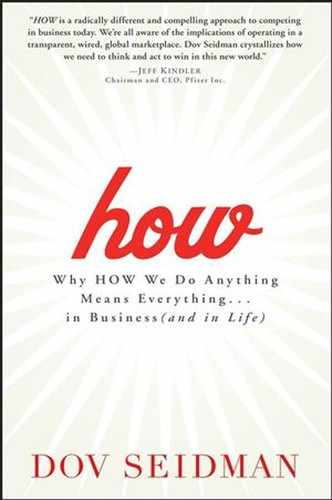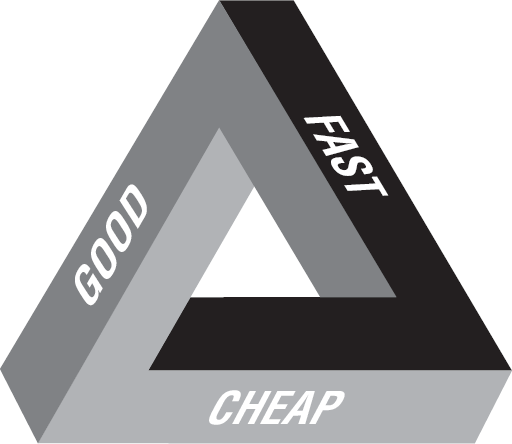Business, simply put, is a vessel that contains and expresses the results of human endeavor. Within it pools much that we aspire to: meaning, success, significance, excellence, and contribution to the greater good. There, too, live greed, self-serving attitudes, covetousness, consumption, exploitation, and a host of our less savory qualities. A company or an organization forms to achieve a goal unattainable by an individual alone—a greater service to others, a larger product, or an advancement of human knowledge. For business to find its greatest expression and achieve its loftier aims, it must organize and govern itself in a manner that unleashes these higher forces in those who join within it. Every group faces the challenge of how best to accomplish this goal, an organizational premise that attracts the best and brightest, inspires them to achieve at the highest level, and generates sufficient reward—both monetary and nonmonetary—to compensate their efforts.
In Part One, we discussed the many forces and factors that have fundamentally changed the world in which business operates, placing a new and intense focus on how we do what we do. In Parts Two and Three, we examined in depth these new hows and explored ways we can, as individuals and groups, learn to master a way of acting and thinking about the world that aligns us more closely with these new realities. Taken together, these three parts provide a new lens through which to see and react to the challenges we face day to day. This leaves us with a profound question: If how is the new fuel of human connectedness and achievement, can we conceive of a new organizing principle, a new way of binding ourselves together, in order to create groups, teams, and organizations more capable of making Waves? In other words, can we embed how horizontally across every aspect of our organization and make it something that informs everything we do?
To illustrate what I mean by that, let's briefly discuss a concept that had a similar transformative effect on twentieth-century business: quality and process management, which I think of as the hows of what. Since the mid-1980's or so, global business heartily embraced the concept of designed-in quality and process reengineering. The impetus for the shift came from the success of Japanese manufacturing techniques. Before Japan's rise as a manufacturing powerhouse, the rest of the world was stuck in the quagmire of the production triangle (see Figure IV.1).
Each point of the triangle represented either fast, cheap, or good. The idea was that you could pick two: You could have it good and fast, but it wouldn't be cheap; good and cheap, but it wouldn't be fast; or fast and cheap, but it wouldn't be good. The trap lay in the fact that quality was generally considered an end-of-the-line inspection point. Widgets would roll off the line, and someone standing at the end would inspect them for quality and throw the bad ones away. If there were 20 steps in the manufacturing process, quality was step 21; steps 1 to 20 didn't concern themselves with quality. Businesses could deliver high-quality products, but it was more costly to do so because it meant throwing away more products at the end of the line. More profoundly, businesses generally viewed quality as an aesthetic, a soft, amorphous characteristic that couldn't be easily quantified or measured. People thought, "I know good quality when I see it; but it's subjective." We did not have a common vernacular for it; good was in the eye of the beholder.
The Japanese came along and stood those concepts on their ear. They realized that quality defects were in fact inefficiencies, and by shifting the idea of quality from the back of the line to the front, they could create a process that manufactured high-quality products far more efficiently and economically. They did this initially by decentralizing the responsibility for quality from the top of the production pyramid, like auto assemblers Toyota and Mitsubishi, to their subassemblers, and then took the savings they accrued and invested in close collaborations with these subassemblers to improve quality in the production lines. Suddenly, they were able to deliver a high-quality product quickly at far less cost, giving the rest of the world a very loud wake-up call. They started winning, with quality as a key differentiator.[196]
Global business raced to catch up. Ford Motor Company proclaimed quality "Job #1."[197] Titans like General Electric embraced the process reengineering concepts of Total Quality Management (TQM) and six sigma to drastically reshape the focus of their corporate cultures.[198] Quality was no longer a vertical silo, the responsibility of some deputized quality assurance/quality control (QA/QC) person at the end of the line; it became the responsibility of every employee at every level of every task. Power shifted from the top of the hierarchy down to its base; anyone, at any stage of the process, could stop the line if they found quality compromised. By designing in quality at every stage of a business process, enterprises of all types were able to wring inefficiencies from their systems and greatly improve productivity.
The quality movement freed Western businesses from the tyranny of the production triangle and overcame the inverse relationship of cost/quality/time. Suddenly, a company could deliver all three: fast, cheap, and good. The best companies today do this every day because that is what it now takes to compete and to win. A Dell computer is not just cheaper; it is just as good as the expensive ones that IBM used to make. Southwest Airlines flies the same routes, under the same regulatory constraints and the same cost pressures as the majors, but found a better way to navigate through a difficult market. Southwest turns around planes faster, makes them perform more reliably, and delivers a high-quality service at a low price.
How did business do it? How did it take this aesthetic, quality, and turn it into a measurable process? First, it sat back and tried to gain some systematic understanding. What are the factors that influence quality? It developed deep knowledge around the forces and dynamics that correlate and cause quality to happen or not happen, and it developed a language in which to frame these thoughts. Armed with that understanding, it began to design, measure, and manage quality as a business process. It broke down the walls surrounding the QA/QC department at the end of the line and pumped the flow of quality throughout the system. In so doing, business took this immeasurable, amorphous thing, quality, and began quantifying it to infinitesimal, six sigma, levels. It gave awards for quality, built international awareness for the accomplishment, and monetized it. Consumers paid more attention to reliability statistics and a company's reputation for quality. More information about the long-term performance of products became readily available in the marketplace and the marketplace reacted accordingly. Companies started winning or losing on quality. The amazing economic growth since that time can be largely laid on the back of this revolution in the hows of what of industry.
The closed-loop business approach to quality—based on quantifiable metrics, real-time information, and continual vigilance, which provide organizations a complete grasp on the people, processes, and information that impact manufacturing, sales, and other elements of their business—can be applied equally systematically to the hows of human conduct. To thrive in the world to come, we must approach the way interpersonal hows work in our organizations in the same way as we did quality. We need to find more ways of building strong synapses between people, getting everyone aligned on a common TRIP, create the environments in which more Waves can start, and develop approaches that transmit these values throughout our group endeavors. To do that, we need to understand systematically the way groups work. We need to understand culture.
There are almost as many different types of organizational cultures as there are groups of people working together; although many seem similar, each has its unique flavor. Anytime people come together to accomplish something larger than themselves, a culture grows. A corporate board has a culture, a business unit has a culture, and every team has its culture. Talking about culture, though—what it is made of, how it forms, how it influences group performance, and how it can be changed—has historically been another amorphous thing, and the province of the few who sit at the top of the organizational chart and worry about such things.
In a world of how, however, these issues are no longer hidden and no longer the province of the elite few. Everyone must learn to innovate in how; not the how of process, but how we do what we do. More and more of us work in teams, more and more of us get opportunities to lead and to start Waves, and more and more of us can influence the culture of the group every day. The powerful forces at loose in the networked world have made the understanding of these issues of critical importance to anyone who wants to thrive today. So in this part, we try to shed some light on what makes groups go. To truly succeed, everyone must open up the way we think about the people we work with to include questions of governance and culture.

